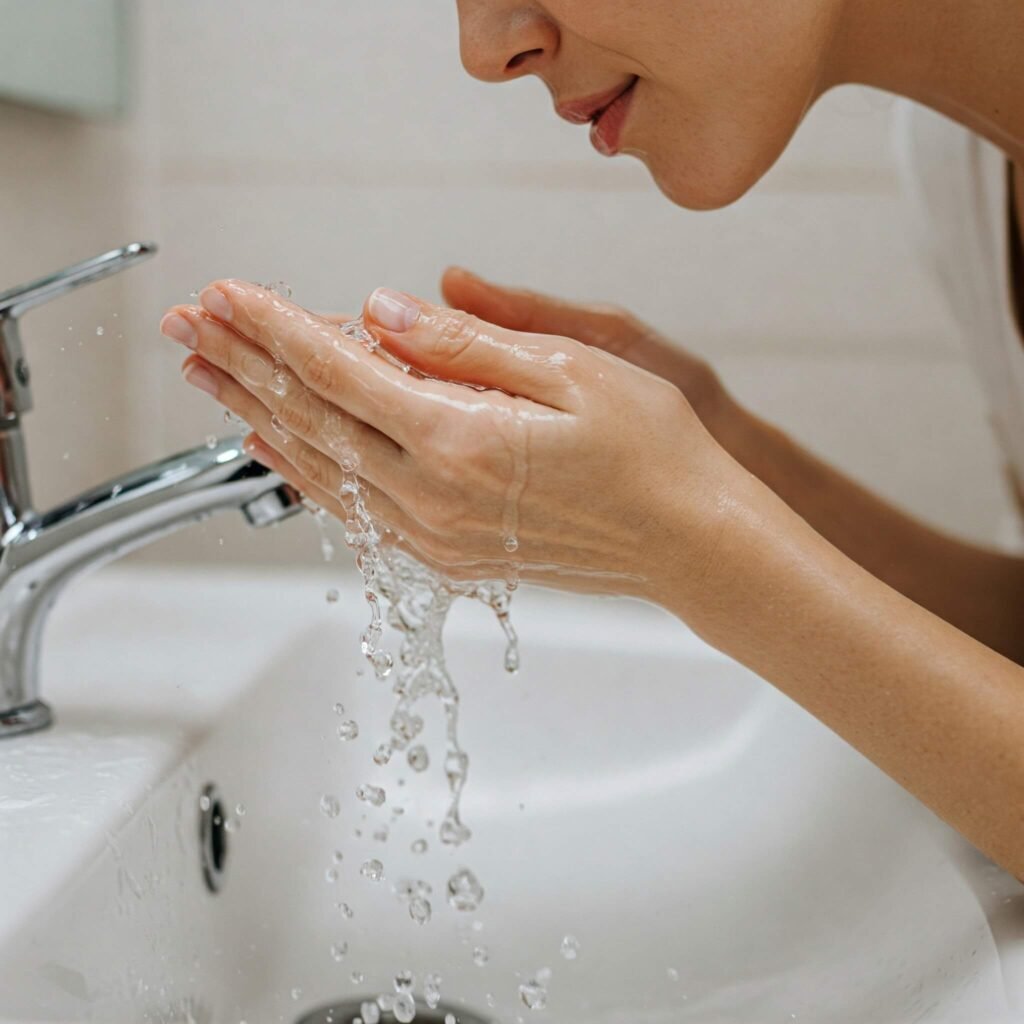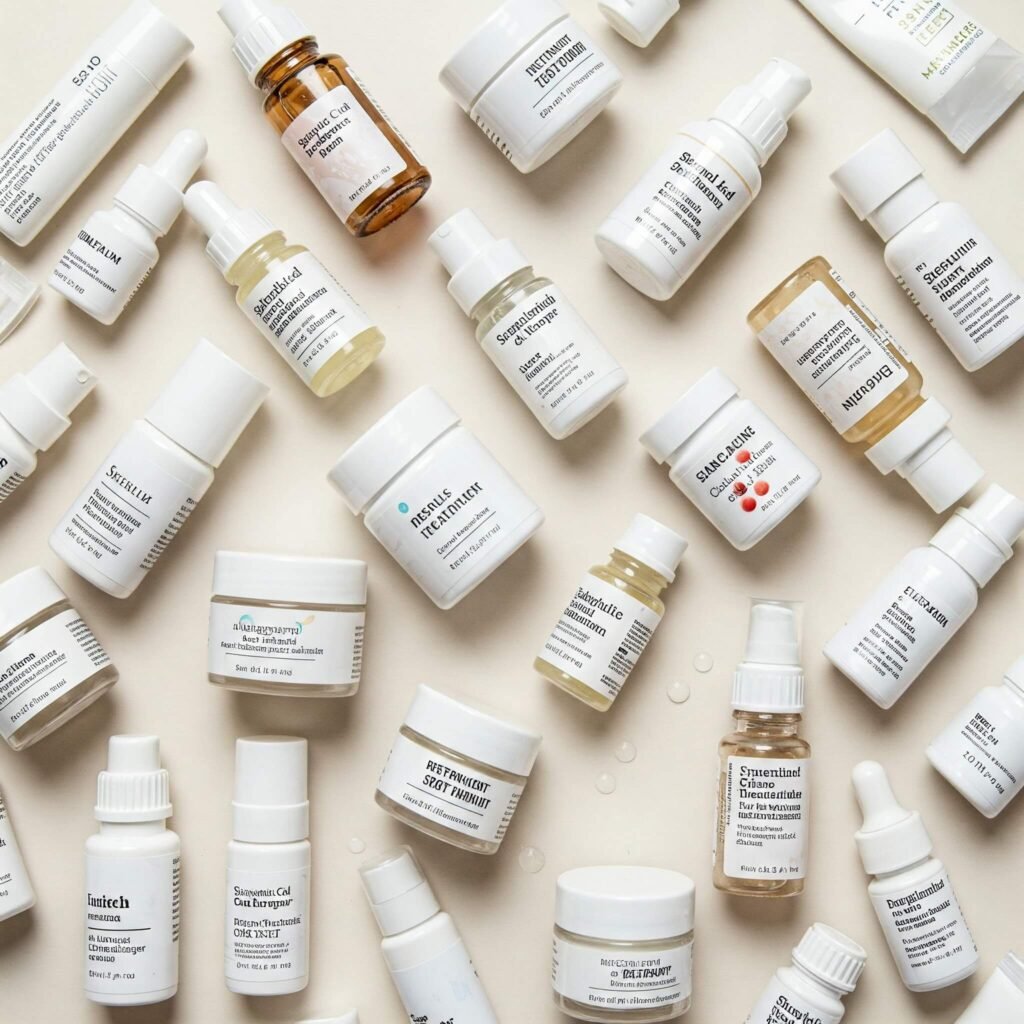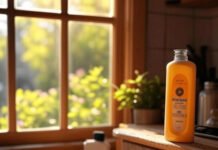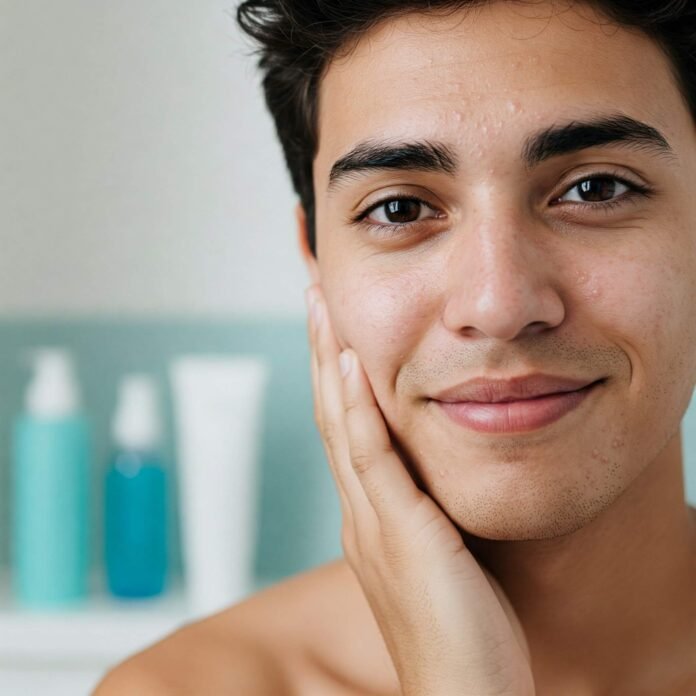Struggling with breakouts can feel incredibly frustrating. You’ve probably tried countless products, maybe even felt discouraged by persistent pimples, blackheads, or cystic bumps. The good news? Achieving clearer, healthier skin is often within reach with the right approach. One of the most powerful tools you have is establishing a consistent, effective skincare routine for acne-free skin. It’s not about miracle cures overnight, but about understanding your skin and giving it what it needs consistently.
Why an Effective Skincare Routine is Crucial for Acne-Free Skin
Acne isn’t just a surface issue; it involves a complex interplay of oil production, dead skin cells, bacteria, and inflammation. A targeted skincare routine helps address these factors systematically. It allows you to:
- Remove excess oil, dirt, and impurities that can clog pores.
- Gently exfoliate dead skin cells to prevent buildup.
- Deliver active ingredients that kill acne-causing bacteria and reduce inflammation.
- Keep your skin hydrated and balanced, preventing it from overcompensating with more oil.
- Protect your skin from environmental damage that can worsen acne.
Without a routine, or with an inconsistent one, you’re essentially letting these acne triggers run wild.
Building Your Skincare Routine for Acne-Free Skin: The Foundational Steps
Creating a daily routine might sound daunting, but it boils down to a few essential steps performed consistently. The key is finding products suited for acne-prone skin.

Step 1: Cleansing – The Base of an Acne-Free Routine
Cleansing is non-negotiable, both morning and night. Its purpose is to remove surface oil, grime, makeup, and anything else that can clog pores.
- Morning: A gentle cleanse is usually enough to refresh your skin and remove any oil or sweat from the night.
- Evening: This is crucial for removing the day’s accumulation. If you wear makeup or heavy sunscreen, consider a double cleanse (using an oil-based cleanser first, followed by a water-based one).
- Product Choice: Look for gentle, non-foaming cleansers. Avoid harsh soaps or scrubs that strip the skin, as this can lead to irritation and even more oil production. Ingredients like salicylic acid in a cleanser can offer a mild exfoliating benefit.
- Technique: Use lukewarm water (hot water can be drying) and your fingertips. Gently massage the cleanser for 30-60 seconds and rinse thoroughly. Pat your face dry with a clean towel – don’t rub!
Step 2: Toning – Balancing Your Acne-Prone Skin (Optional but Beneficial)
Toners have evolved! Modern toners, especially those for acne-free skin goals, help remove any remaining traces of cleanser, balance the skin’s pH, and can deliver beneficial ingredients.
- Product Choice: Avoid toners with high alcohol content, which can be drying and irritating. Look for toners with ingredients like witch hazel (gentle astringent), niacinamide (reduces inflammation, improves barrier), or low concentrations of AHAs/BHAs (for gentle exfoliation).
- Technique: Apply a few drops to a cotton pad and swipe gently over your face, or pat it in with clean hands.
Step 3: Treating – Targeting Acne Concerns Directly
This is where you introduce powerful ingredients specifically designed to combat breakouts. Treatments are typically serums, spot treatments, or prescribed medications.

Key Ingredients for an Effective Acne-Free Skin Routine
- Salicylic Acid (BHA): Oil-soluble, penetrates pores to dissolve buildup. Great for blackheads and whiteheads.
- Benzoyl Peroxide: Kills acne-causing bacteria. Available in various strengths. Can be drying, so start with a lower concentration.
- Retinoids (like Adapalene): Increase cell turnover, preventing pores from becoming clogged. Excellent for preventing new breakouts and improving skin texture. Start slowly as they can cause initial purging or dryness.
- Niacinamide: Reduces inflammation, redness, and can help regulate oil.
- Azelaic Acid: Helps unclog pores, reduces inflammation, and can fade post-acne marks.
- Technique: Apply serums to dry skin after cleansing (and toning). Spot treatments can be applied directly to individual pimples. Follow product instructions carefully regarding frequency (some treatments are only for PM use).
Step 4: Moisturizing – Essential for Healthy, Acne-Free Skin
A common myth is that oily or acne-prone skin doesn’t need moisturizer. This is false! Stripping your skin of moisture makes it produce more oil to compensate, leading to more breakouts. Moisturizing keeps your skin barrier healthy.
- Product Choice: Choose lightweight, non-comedogenic (won’t clog pores) moisturizers. Gel or lotion textures are often preferred over thick creams. Look for ingredients like hyaluronic acid, glycerin, or ceramides for hydration.
- Technique: Gently pat moisturizer onto your face after applying treatments.
Step 5: Sun Protection – Protecting Your Progress
Sun exposure can worsen inflammation, cause post-inflammatory hyperpigmentation (dark spots left by acne), and compromise skin health. Many acne treatments also make your skin more sensitive to the sun. SPF is non-negotiable for acne-free skin maintenance.

- Product Choice: Use a broad-spectrum SPF 30 or higher daily. Look for “non-comedogenic” and “oil-free” formulations. Mineral sunscreens (zinc oxide, titanium dioxide) are often well-tolerated by sensitive, acne-prone skin.
- Technique: Apply as the last step in your morning routine. Reapply throughout the day if needed (especially if sweating or in direct sun).
Structuring Your Daily Skincare Routine for Acne-Free Results (AM vs. PM)
Here’s a typical structure:
- Morning Routine for Acne-Free Skin:
- Gentle Cleanser
- (Optional) Toner
- (Optional) Antioxidant Serum (like Vitamin C)
- Lightweight Moisturizer
- SPF 30+
- Evening Routine for Acne-Free Skin:
- Cleanser (Double cleanse if needed)
- (Optional) Toner
- Acne Treatment Serum (e.g., Salicylic Acid, Niacinamide, Retinoid – follow specific product instructions)
- Moisturizer
Beyond the Basics: Essential Tips for Maintaining Acne-Free Skin
Consistency with the core steps is vital, but these additional tips can significantly support your goal of achieving acne-free skin:
Be Patient on Your Journey to Acne-Free Skin
Skincare takes time. It can be discouraging not to see results immediately, but it often takes weeks or even months for your skin to respond to a new routine or products. Give new products at least 4-6 weeks before deciding if they are effective. Consistency is your best friend here.
Avoid Picking: A Key Rule for Acne-Free Skin
It’s tempting, but picking or squeezing pimples is one of the worst things you can do. It can push bacteria deeper into the skin, worsen inflammation, increase the risk of infection, and significantly increase the chances of scarring and post-inflammatory hyperpigmentation (those annoying dark or red marks left after a pimple heals). Keep your hands away from your face!
Hygiene Tips for Supporting Your Acne-Free Routine
Simple hygiene habits can make a difference. Change your pillowcase regularly (ideally 2-3 times a week) to avoid accumulating oil and bacteria. Clean your phone screen frequently, as it touches your face. Avoid touching your face throughout the day unnecessarily. Also, clean your makeup brushes regularly if you use them.
Lifestyle Factors for Healthier, Acne-Free Skin
While the link between diet and acne is complex and varies for individuals, managing stress, getting enough sleep, and staying hydrated can all contribute to overall skin health. Some people find certain foods exacerbate their acne (like dairy or high-glycemic index foods), but this is highly individual. Focus on a balanced diet and see if you notice any patterns.
Patch Testing New Products for Acne-Prone Skin
Your skin can be sensitive, especially when using active acne ingredients. Before applying a new product all over your face, do a patch test. Apply a small amount to an inconspicuous area (like behind your ear or on your jawline) for a few days to see if any redness, itching, or irritation occurs.
Avoid Over-Treating Your Skin
It might seem logical to use every acne product you own at once, but this can overload and irritate your skin, potentially making acne worse or causing a damaged skin barrier. Stick to one or two active ingredients in your routine, introduce new ones slowly, and always follow product instructions. Sometimes, less is more.
Choosing the Right Products for Your Acne Skincare Routine
Finding the right products is key. It might involve some trial and error. Focus on products labeled “non-comedogenic,” “oil-free,” or “for acne-prone skin.” Pay attention to the active ingredients mentioned earlier and choose products that target your specific type of acne (e.g., salicylic acid for blackheads/whiteheads, benzoyl peroxide for inflammatory pimples).
Consistency is Key to an Effective Acne-Free Skin Routine
Seriously, this is perhaps the most important factor. Doing a routine sporadically won’t yield results. Stick to your morning and evening steps daily, even when you’re tired. It’s the cumulative effect that makes a difference in achieving and maintaining acne-free skin.
When to Seek Professional Help for Your Acne Journey
If you have moderate to severe acne, cystic acne, or if over-the-counter products aren’t helping after consistent use (say, 2-3 months), it’s time to see a dermatologist. They can diagnose your specific type of acne, prescribe stronger medications (like topical or oral antibiotics, prescription retinoids, or isotretinoin), and offer in-office treatments like chemical peels or extractions. Don’t feel like you have to tackle severe acne alone. [Outbound Link: Find a Board-Certified Dermatologist Near You – Example: Link to American Academy of Dermatology “Find a Dermatologist” tool or similar national organization].
Conclusion
Creating an effective skincare routine for acne-free skin is a powerful step towards gaining control over breakouts and boosting your confidence. It requires patience, consistency, and understanding your skin’s needs. By following these fundamental steps and tips, you’re well on your way to achieving clearer, healthier skin. Remember, every skin journey is unique, so listen to your skin and adjust as needed!
































